10 Tips to Handle Customer Complaints

Table of contents
Getting customer complaints is an inevitable part of running any business. However good your product or service offerings are, there will be instances where something goes wrong, customers run into some trouble, or their expectations go unmet.
But instead of viewing this as a negative, think of it this way – you have the opportunity to provide great customer service to this customer and win them over in a way that they might actually begin to have a more positive view of your business than the one they had before.
How you handle customer complaints says a lot about you as a business. Accept the feedback, learn from it, and make sure you do everything you can to solve the problem your customer is facing.
In this article, we deep-dive into the fundamentals of handling customer complaints in a way that bolsters your brand reputation and helps you drive customer retention.
Table of Contents
- So why do customers complain?
- Ten steps to resolving customer complaints
- How to reduce customer complaints
- Frequently Asked Questions (FAQs)
- Take your customer service to the next level
So why do customers complain?
The simplest explanation is that there is a gap between the customer’s expectations and the reality of what was delivered. These gaps can come about whenever:
- Your customer misunderstands or wrongly assumes something about the product or service they are buying.
- Your customer has a bad experience during some part of the purchase process or while using the product itself.
- Something happens that’s outside your company’s control. For instance, a customer buys your product from a third-party site and the order gets delayed.
- A legitimate mistake has been made on your or your company’s part.
As I mentioned above, in any business, customer complaints are inevitable. It’s how you handle customer complaints that’s more important. .
Why? Because word of mouth still rules, and these days dissatisfied customers can use more platforms than ever to get attention. They can reach more people with a single complaint. Think about all the places they can leave reviews — Amazon, Yelp, Facebook, Twitter, Google, you name it.
On the other hand, happy customers will refer you, and customers whose problems have been resolved often become more loyal than they were before – that’s according to a phenomenon known as Service Recovery Paradox.
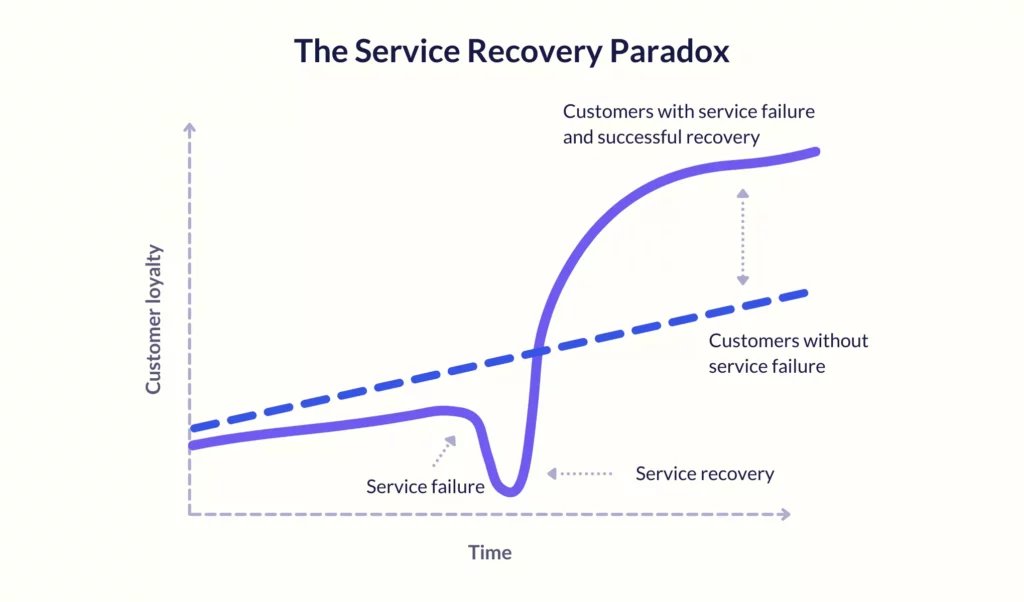
So stop dreading customer complaints. Instead, embrace them and learn to handle them.
Here are 10 tips that will help you on your way.
Ten steps to resolving customer complaints
Start thinking creatively about how to respond to customer complaints using these suggestions.
- Empower your agents to take action
- Be a good listener
- Ask the right questions
- Keep your cool
- Be a mirror
- Apologize (even if it’s not your fault)
- Customize your communication
- Don’t waste customers’ time
- Go above and beyond
- Close the loop
1. Empower your agents to take action
You know the saying, “People don’t care how much you know until they know how much you care.” It’s especially true when it comes to customer service. So allow yourself or your team a little leeway when responding to complaints.
When you trust and empower your customer service team to come up with resolutions, they will rise to the occasion.
Here’s an example of what happened at Rackspace, a cloud computing company that prides itself on being “fanatical” about customer experiences. This one time, a major system failure broke down the company’s internal servers, including their phone system. Their employees quickly took the initiative to Tweet out their personal cell numbers, so customers could reach them despite a system failure.
Now, even though this wasn’t mentioned anywhere in any policy handbook, the company had empowered its employees to put their customers’ experience above everything!
2. Be a good listener
In his book, The 7 Habits of Highly Effective People, Stephen R. Covey wrote:
“Most people do not listen with the intent to understand; they listen with the intent to reply.”
According to him, people usually listen at four levels. They might ignore what’s being said, they might pretend to listen, they might listen selectively, or they might even listen attentively. Very few people listen empathetically.
For customer service professionals, empathetic listening is perhaps the most important skill, especially when it comes to dealing with customer problems. As Covey points out, empathetic listening is about listening with the intent to deeply understand a person and see the world as they see it.
Even when you’re dealing with customer emails, where you’re not “listening” in the usual sense, you should read thoughtfully and carefully. As a matter of fact, read an email more than once to make sure you haven’t missed anything.
A couple of things you can try implementing when talking to customers is –
- Practice Active Listening: Show genuine interest by asking clarifying questions and summarizing what the customer has said. This not only ensures you understand their issue but also demonstrates that you are fully engaged and valuing their perspective.
- Avoid Interruptions: Let the customer finish speaking before responding. Avoiding interruptions shows respect for the customer’s experience and helps in accurately understanding their concerns. This patience often leads to more effective and satisfying resolutions.
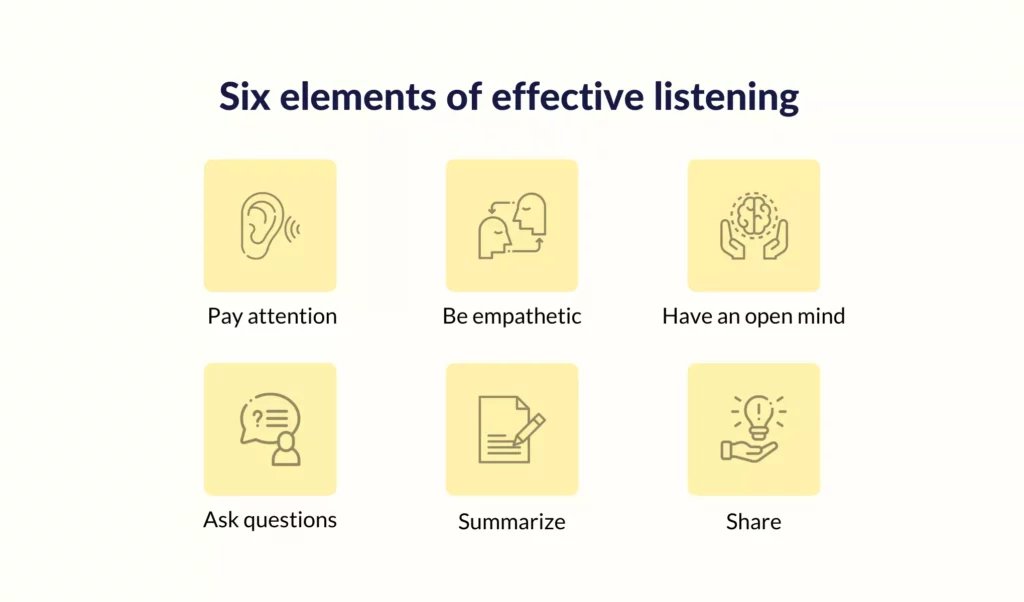
3. Ask the right questions
Empathetic listening will help you understand a customer’s emotions and frustrations. The next important step is to get to the root of the issue they’re facing and to do that, you’ll need to ask the right questions.
Ask open-ended questions that require a longer answer rather than a simple “yes” or “no.” Questions like:
- What do you mean by…?
- Tell me more.
- Can you explain?
- Can you give an example, provide a screenshot, etc.?
- What does a successful outcome look like for you?
- Is there anything else?
Understand what kind of resolution they are hoping for if they haven’t been specific. Do they want their money back? Do they want you to walk them through a solution to their problem? Do they want a replacement product?
If follow-ups are needed, always encourage the customer to reach out to you personally. If there’s a chance that their issue may be escalated and someone else will be jumping in, be sure to leave notes for the next person.
There’s nothing more frustrating to a customer than having to explain themselves from the beginning to someone else. Hiver’s research report – Customer Support Through The Eyes of Consumers, found: 1 in 2 people say that the most annoying part of customer support is having to explain their problem multiple times.
4. Keep your cool
As a customer service professional, you’re bound to have encountered customers who’ve lost their cool for no fault of yours. In such cases, it’s important to always say respectful and calm, no matter how unjustified a customer’s reaction may be.
Lee Cockerell, the former COO of Walt Disney World, has some great advice on dealing with irate customers in his book, The Customer Rules. He writes:
“When a customer has a tantrum, it is vital not to take it personally. The anger is not about you—the customer doesn‘t even know you or care about you—it is about a situation. He‘s been disappointed or frustrated. Maybe she feels ripped off. The complaint may be totally unreasonable, and the reaction may be way over the top. Or not. Either way, it‘s not about you. It‘s about the circumstances.”
Cockerell shares six tips for responding to customers in such situations:
- Let your customers vent without interrupting them. Perhaps all they want is to be heard.
- Take complete responsibility for their problem without blaming it on someone else, or making excuses about it.
- Be quick to think of a reasonable solution to their problem, but even if you can’t find one right away, take your time to get back to them with something thoughtful. The key is to treat them with decency and help them calm down.
- Treat customers as though they’re always right (even when you know they’re not). You have a lot more to gain than lose by simply letting go.
- Make it convenient for customers to complain – have a contact number or an email address they can easily reach a trained team of “real” people. Consider it preventive medicine. As Cockerell puts it, “an ounce of complaint today is worth a pound of argument tomorrow.”
- Always remember – if you’ve won an argument with a customer, you’ve actually both lost.
5. Be a mirror
A great way to win over an upset customer is to acknowledge their frustration and speak their language. This shows them that you care (this is critical) and that they matter to you and to the company.
Use phrases like, “I understand you’re disappointed,” “I see you’re upset,” “If I were you, I’d feel the same way,” and, “I can see how that would be really frustrating.”
Always promise them a solution or a workaround. Finally, sum up with something like, “So if I understand you correctly [explain the situation]. I can see how that would be really frustrating.”
Mirroring your customer’s issue back to them, along with restating the impact, helps to ensure that everyone is on the same page and resolution can begin.
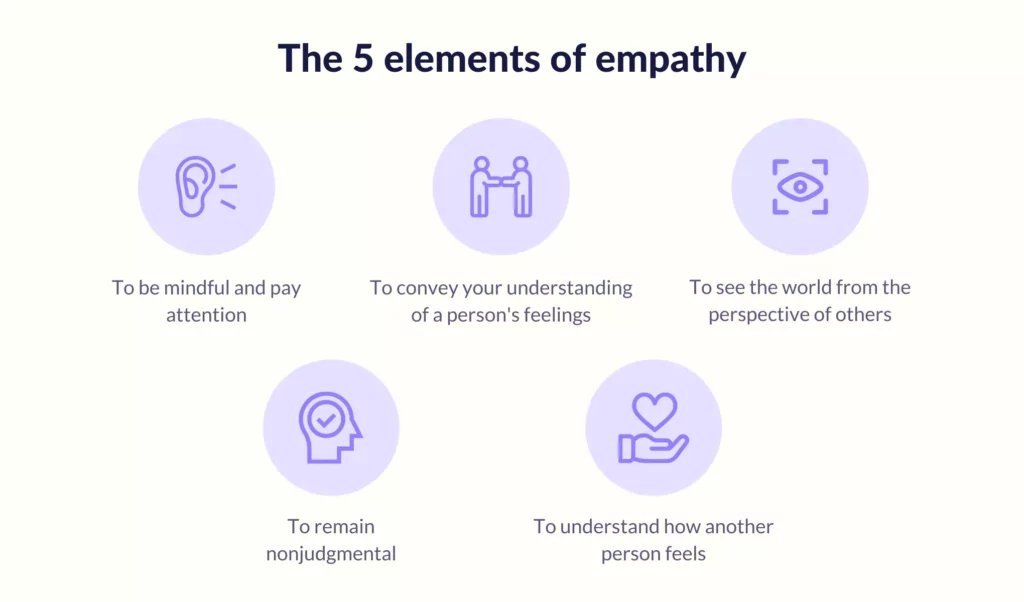
6. Apologize (even if it’s not your fault!)
Like we mentioned before, it’s important that you take responsibility for the inconvenience a customer is facing due to your product or service. Apologize to them even if it’s not your fault, and even if they’re mistaken.
A research study by The Nottingham School of Economics found that unhappy customers are more likely to forgive a company that offers them a heartfelt apology rather than one that compensates them.
The study reported that 45% of customers withdrew their negative evaluation of a company in light of an apology, while only 23% agreed to do the same in return for compensation.
Apologizing to your customers still means you can explain why a problem occurred without making excuses about it.
When you give an excuse, you shift or sidestep the blame to some circumstance that is outside your control. Even though your excuse may be true, it puts you in a defensive position. It’s an emotional response that may seem like you’re trying to convince the customer that their experience or emotions aren’t valid. That’s not the goal.
An explanation, on the other hand, clarifies the cause or reason without minimizing the impact. The emotion is left out of it.
Examples:
- Excuse: “You can’t blame us because the shipper destroyed the package!”
- Explanation: “It looks like there was an accident during shipping. I’m sorry about that. I’ll pass this on to our shipping department and make sure that we get a replacement out to you right away.”
Same situation, but the second response is more positive and empowering.
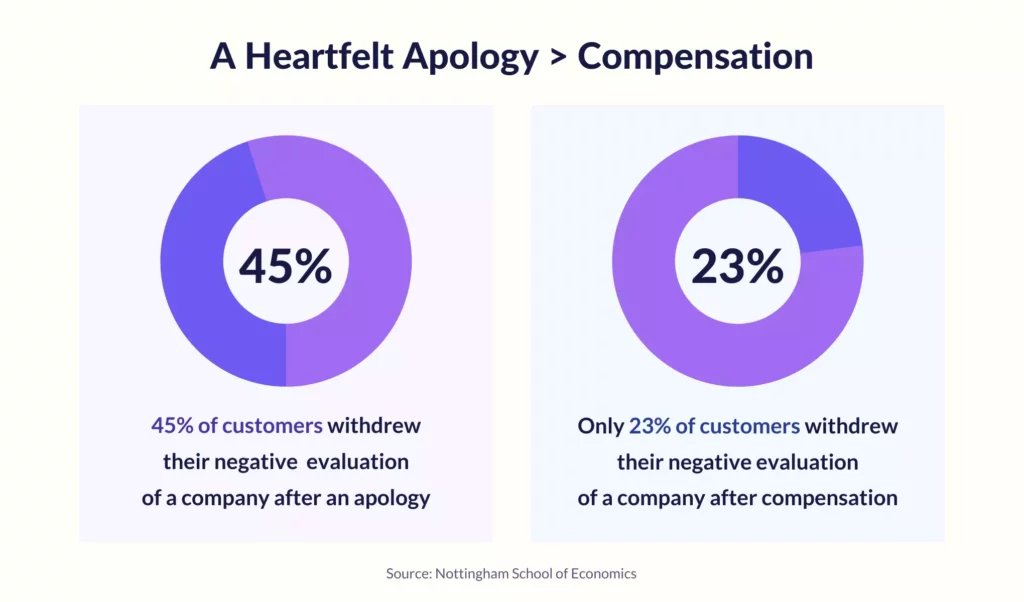
7. Customize your communication
No two customers are the same, and neither should how you service them be. Learn to read the cues your customer is giving you, and tweak your communication with them accordingly. It’s often helpful to imagine customers taking on certain personalities. For example, you may have:
- The Blusterer: If your customer is especially upset, they may spend a little more time in their email decompressing or blowing off steam. Be patient and let them. Don’t allow it to affect you emotionally.
- The Rusher: If your customer seems to be in an extreme hurry, stressing the urgency of the problem or seeming unwilling to slow down and give enough detail, asking brief, open-ended, probing questions as in #3 above will help.
- The Challenged: Some folks aren’t tech-savvy. Others may be first time users and might need hand-holding with your product or service. These customers may need a little extra education and TLC before they understand. You will win loyalty points if you’re patient when dealing with them.
- The Know-it-All: If your customer is knowledgeable or has insider insight into the issue, they may try to tell you how to do your job. Try to educate them respectfully. Compliment them for understanding the issue so well. In the end, if they’re not receptive to your feedback, at least you know you did your best. But most will come around.
- The Straight-Up Simple: If the issue is simple, with a simple fix, and your customer knows that, then too many extraneous, probing questions will be annoying. Adjust your approach to the situation at hand. Solve the problem quickly and allow your customer to get on with their day.
8. Don’t waste customers’ time
If you need to escalate your customer’s issue to a manager or specialist, don’t delay. Tell them that you’re not the right person to help them, explain why, and explain exactly what will happen when you turn them over to the right person.
For example:
“I have to pull in the tech team on this issue. I’m going to forward this to [department] or [person’s name]. They will [take specific action.] You should hear back via email within [timeframe]. Please reach out to me if you don’t hear back, or if you have any questions in the meantime.”
Make sure your system or processes allow the next person to be fully briefed so that your customer has a seamless support experience.
Your customers will definitely appreciate the clear communication and extra effort that you’ve taken.
9. Go above and beyond
Most companies will have resolution policies and standard operating procedures in place. That’s great, but not enough. That should in fact be your jumping-off point to delight customers.
Best-in-class organizations offer customer support teams latitude in deciding how best to help customers. For example, a local high-speed internet provider may offer a free month of service if you experience any downtime during the month. Talk about a pleasant surprise!
Late Tony Hsieh, the former CEO of Zappos, was known to have built a strong culture of customer obsession at the company. Every employee at Zappos is encouraged to go out of their way to deliver memorable customer experiences. There’s a famous quote from Hsieh that says:
“When people call our call center, our reps don’t have scripts, and they don’t try to up-sell. They are just judged on whether they go above and beyond for the customer and really deliver a kind of personal service and emotional connection with our customers.”
This is the kind of customer obsession that’s earned Zappos a huge base of loyal customers. In fact, 75% of its business comes from repeat customers, even though its prices are not exactly low.
Going the extra mile can not only turn customers’ negative experiences around, but it can also earn you their trust. Here are some tips on how you can wow customers when they come to you with complaints:
- Empower them with relevant information: Don’t just stop at resolving their problems; empower them with necessary resources that can help them resolve a problem on their own, should it arise again.
- Communicate honestly and frequently: Proactively update customers on complaint progress. Inform them of expected resolutions and timelines, but avoid making promises you can’t keep. Ensure that your SLA policy specifies the time frame within which customers can expect their queries to be resolved. As per Hiver’s Customer Service Benchmark Report, 46% of teams have an SLA policy to resolve customers’ issues under 6 hours.
- Don’t hold back on the surprises: Think about solutions that don’t cost your company a lot (or anything at all) but could translate into a lot of value for your customer. Has your customer experienced costly downtime? A partial refund might be in order. Have they been frustrated and inconvenienced? Maybe you can offer a free add-on, additional program or service, or an upgrade. Surprise them by sending a physical gift, a gift card, or a coupon toward future purchases.
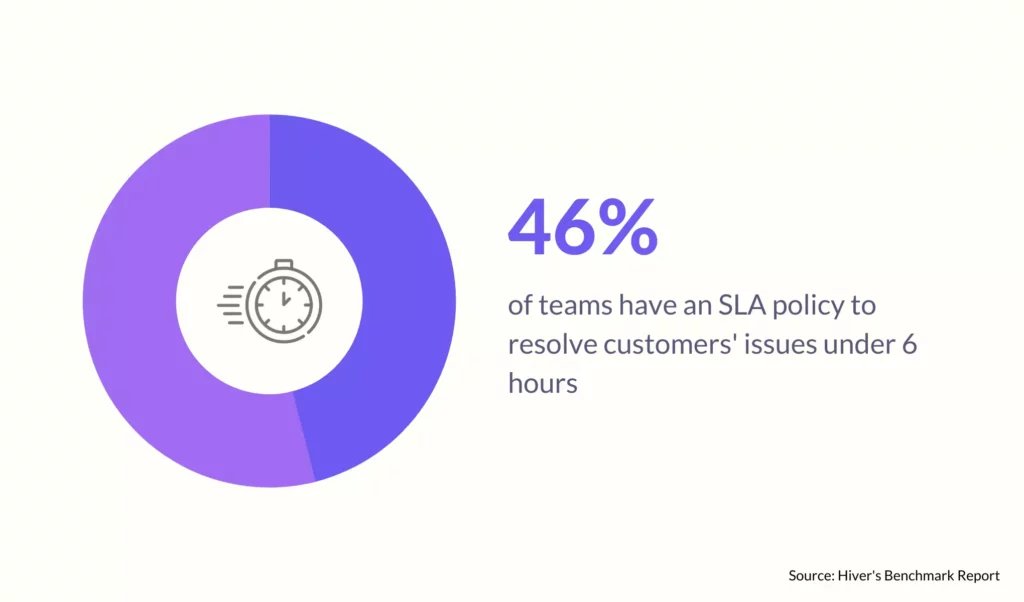
10. Close the loop
Finally, don’t forget to follow up.
Verify that the customer is satisfied and ask if they need assistance with any other issues.
Your company may have procedures already in place, for example, they may send a survey immediately afterward.
Here again, though, you have an opportunity to go above and beyond your standard operating procedures:
- You could build a personal relationship by letting customers know that they can reach out to you personally in the future.
- You could check in with them several days later to make sure all is well.
- You or your team could send special holiday or birthday messages.
None of this has to take a whole lot of time or detract from your usual duties. Again, consider bringing these ideas with your team and see what might be easily added and optimally automated.
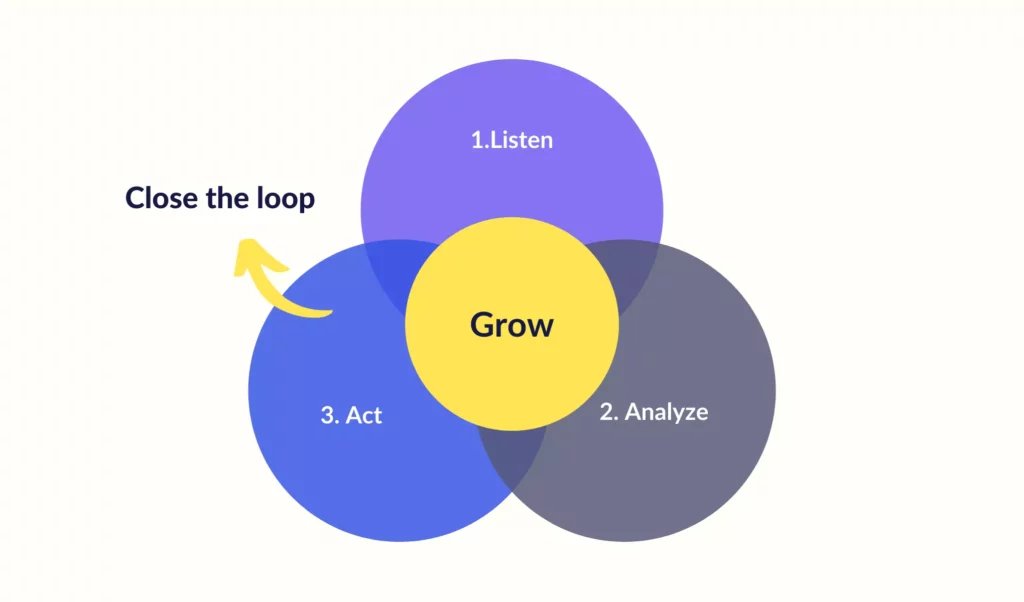
Of course, in a perfect world, you wouldn’t receive any complaints at all. Let’s look at a few innovative ways to minimize customer complaints.
How to reduce customer complaints
We’ve discussed the best way to handle customer complaints but keep in mind that it’s important to try and reduce customer complaints. You know how the saying goes – prevention is always better than the cure. Let’s take a look at some things to keep in mind to reduce the number of customer complaints coming in –
1. Prioritize constantly updating your company’s knowledge base
A great way to reduce customer complaints is to build and regularly update your company’s knowledge base. When a customer can find the solutions that they’re seeking without having to contact you at all, it’s a win-win for everyone involved. HubSpot research has found that 90% of customers want immediate answers to their questions, and a self-service solution like a knowledge base can help with that.
2. Make sure that you have omnichannel support available
Customers today want to reach out to you through channels they are most comfortable with. Some use email, some prefer phone calls, others opt to @mention your brand on social and share their thoughts.
The bottom line is that your company needs to be present across all these channels. You can do this by prioritizing omni-channel support – where all your support channels are seamlessly inter-connected. This will enhance communication between customers and agents and lead to faster, more accurate resolutions.
3. Leverage data to make holistic improvements
Analyzing the data from customer feedback, surveys, social media, and support tickets can help you identify frequent complaints and their underlying themes. When you begin to solve the underlying issues causing the complaints, naturally the number of complaints will go down.
For instance, if data analysis reveals that your product gets a lot of complaints due to a specific defect, the company can investigate and identify the manufacturing process causing the issue. By making targeted adjustments to the production line or material sourcing, the defect rate can be reduced, leading to fewer customer complaints and higher product satisfaction.
Frequently Asked Questions (FAQs)
1. What should I do first when I receive a complaint?
Listen carefully and acknowledge the customer’s feelings. Make sure they feel heard before you proceed.
2. What if I don’t have an immediate solution?
Inform the customer that you are looking into their issue and will get back to them with a resolution as soon as possible.
3. What should I do if I can’t resolve the customer’s complaint?
Escalate the issue to a higher authority within your organization who may have more resources or authority to solve it.
4. How can I prevent future complaints?
Analyze the root causes of complaints and implement changes to processes or products to improve overall customer satisfaction.
5. What training should staff receive for handling complaints?
Staff should be trained in effective communication, empathy, company policies, and problem-solving techniques.
6. How do I know if our complaint handling process is effective?
Monitor outcomes, customer satisfaction post-resolution, and look for trends in feedback to assess and improve the process.
Take your customer service to the next level
Your reputation matters. Providing excellent and innovative resolutions to customer complaints can help your company stand out. It’s a real competitive advantage that will pay off with loyal customers over the long haul and earn you tons of great references and new customers.
But of course, you need the right tech foundation, including the right customer service solution.
Once you have a solid complaint management process in place, you can start improving it. So involve your team, get creative, and watch your customer satisfaction metrics rise.

































